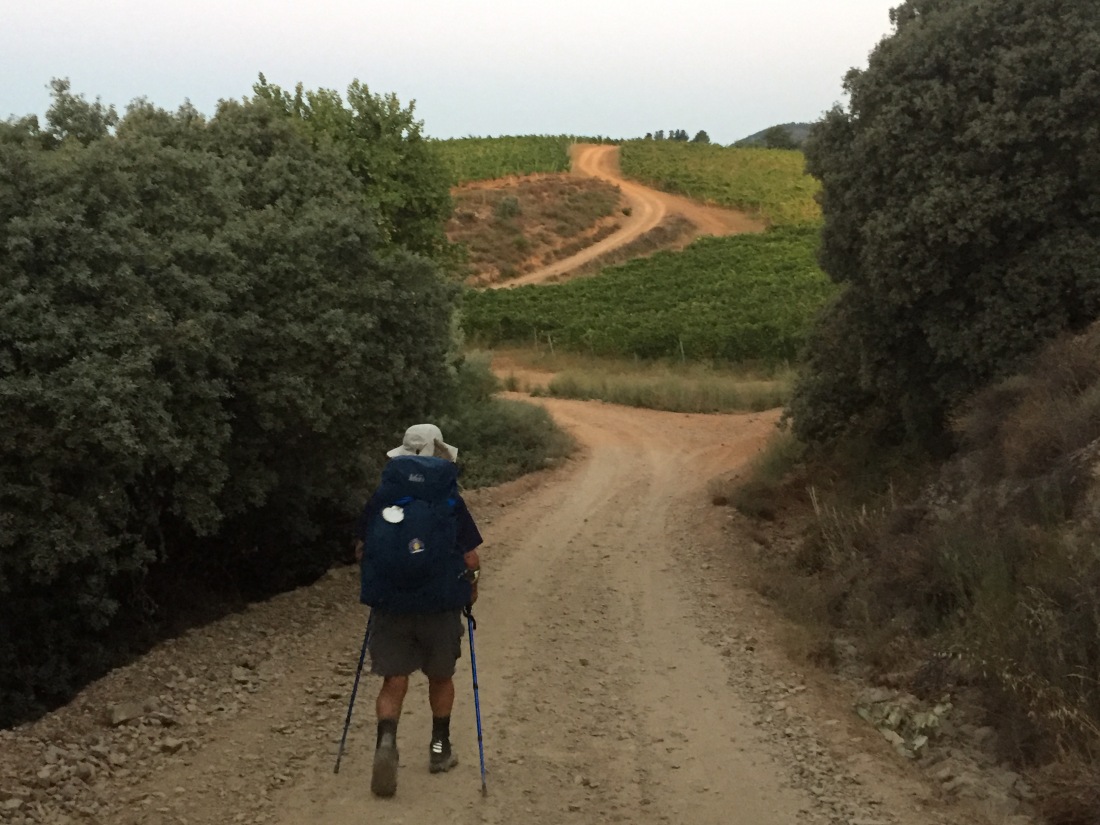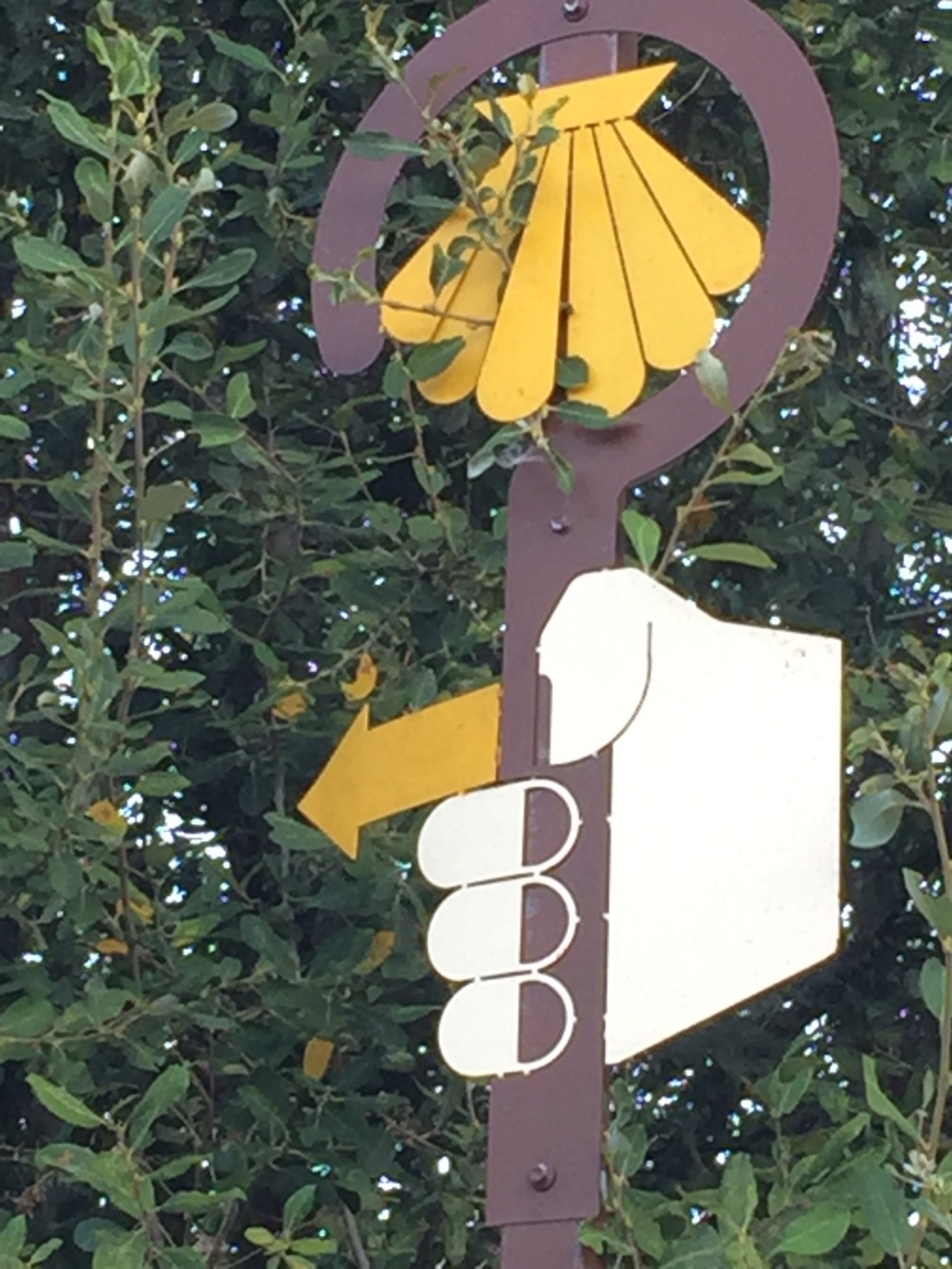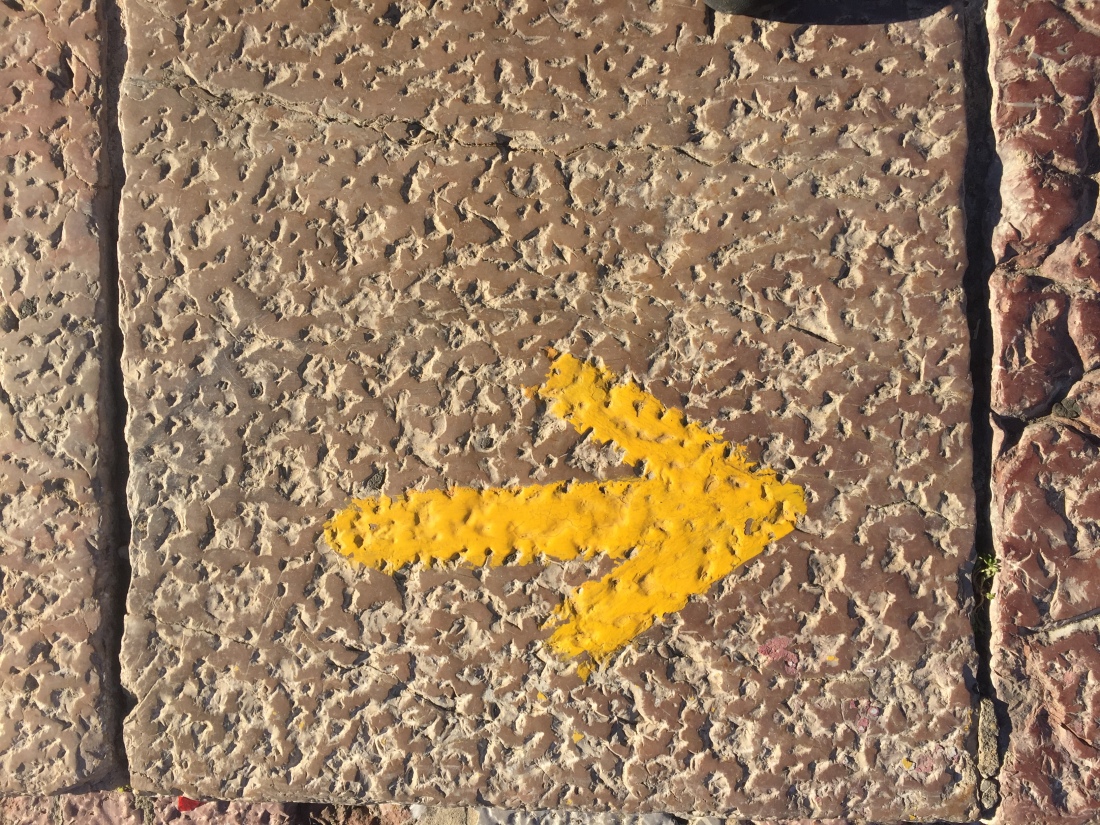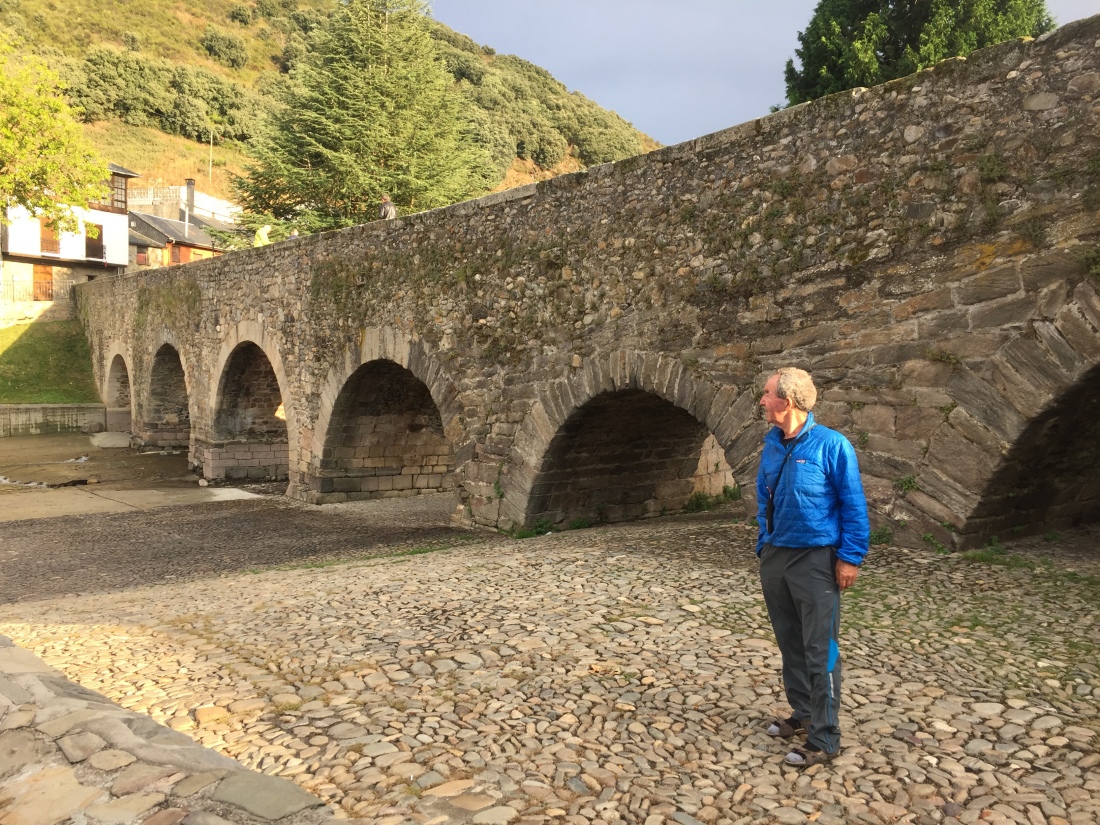
October 6, 2018

Hiking Across Spain

October 6, 2018


October 5, 2018


October 4, 2018
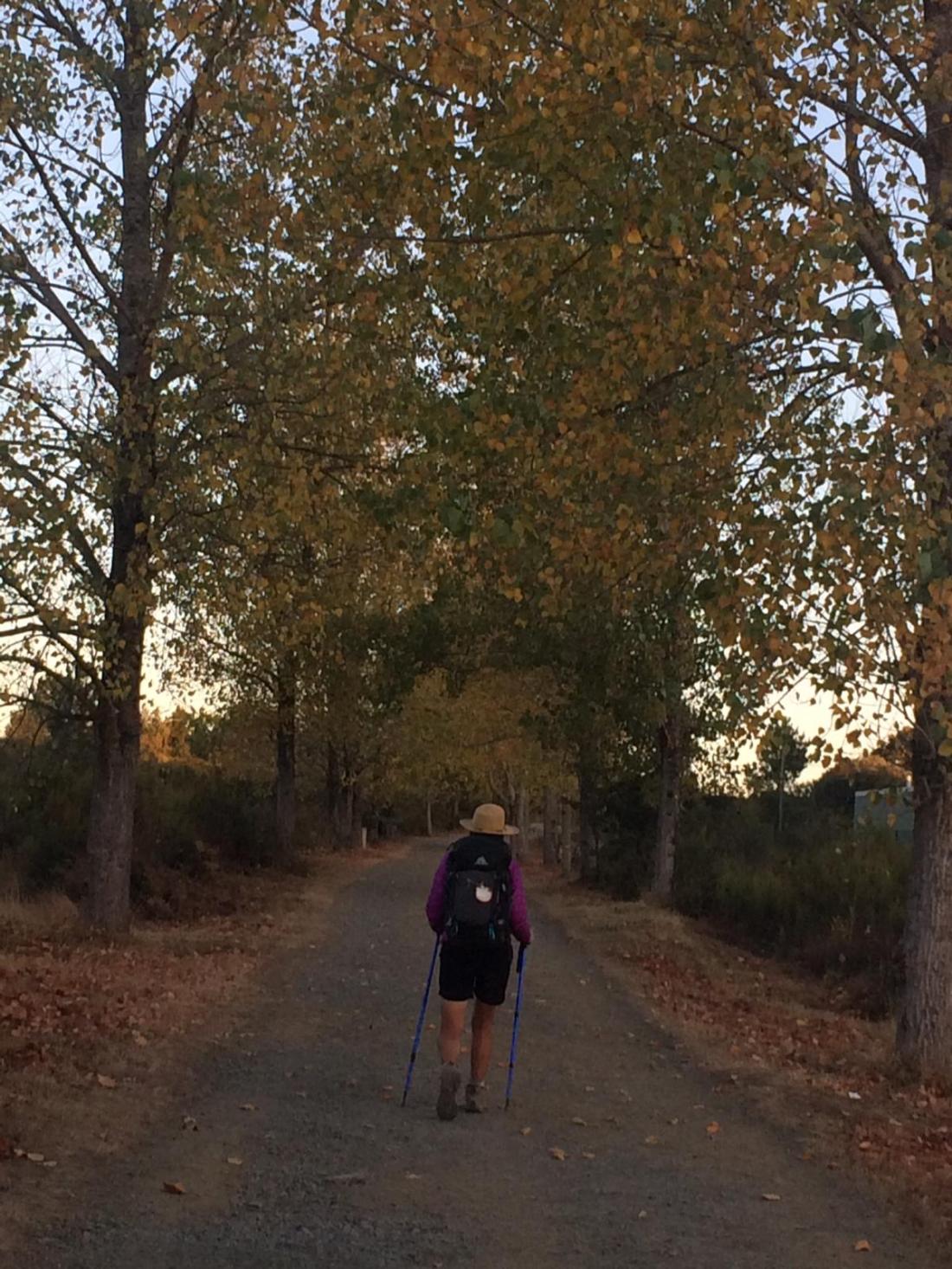

October 3, 2018
With the end getting closer, I started to think about all the things I would miss about the Camino:

October 2, 2018
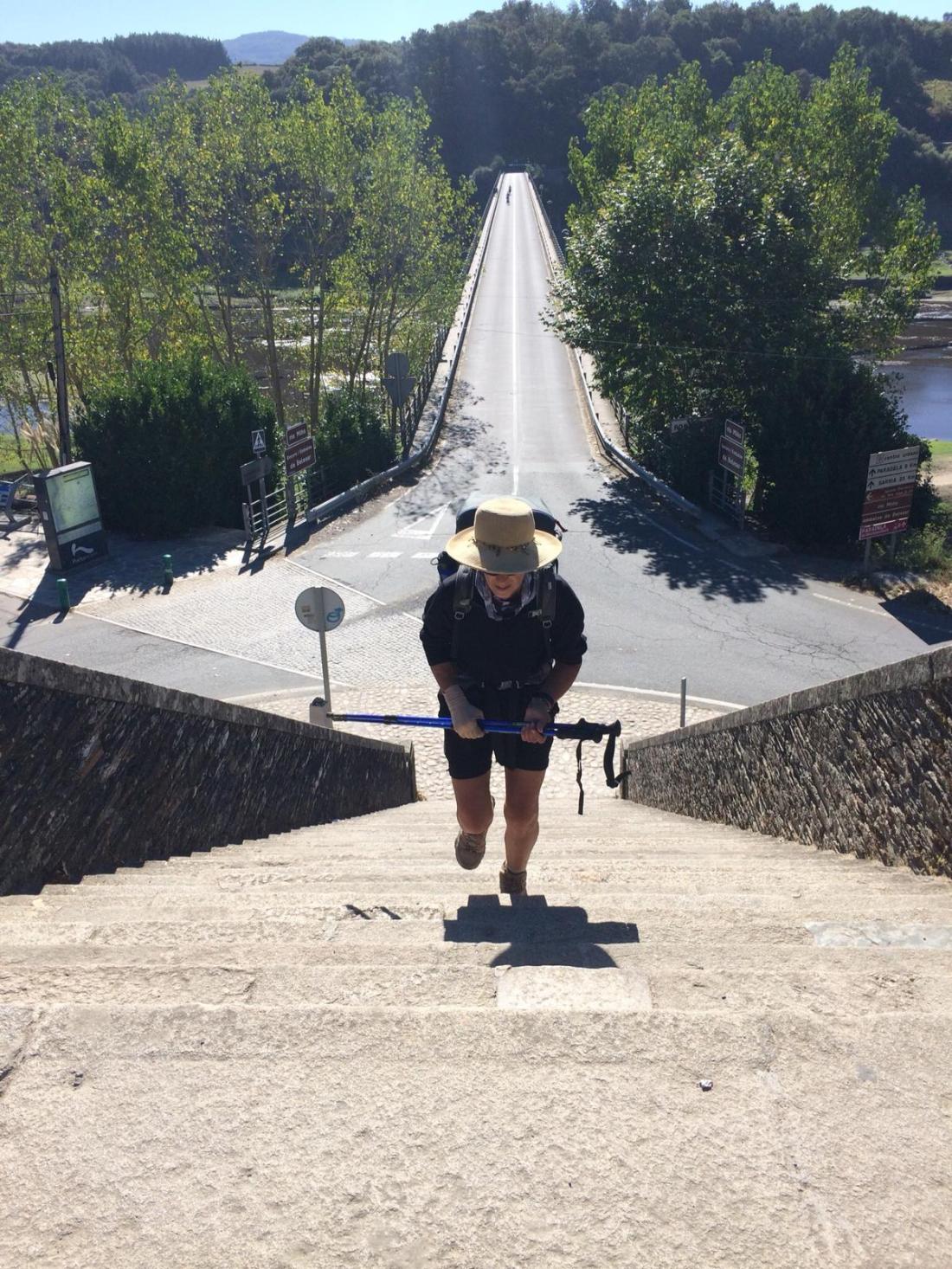


October 1, 2018
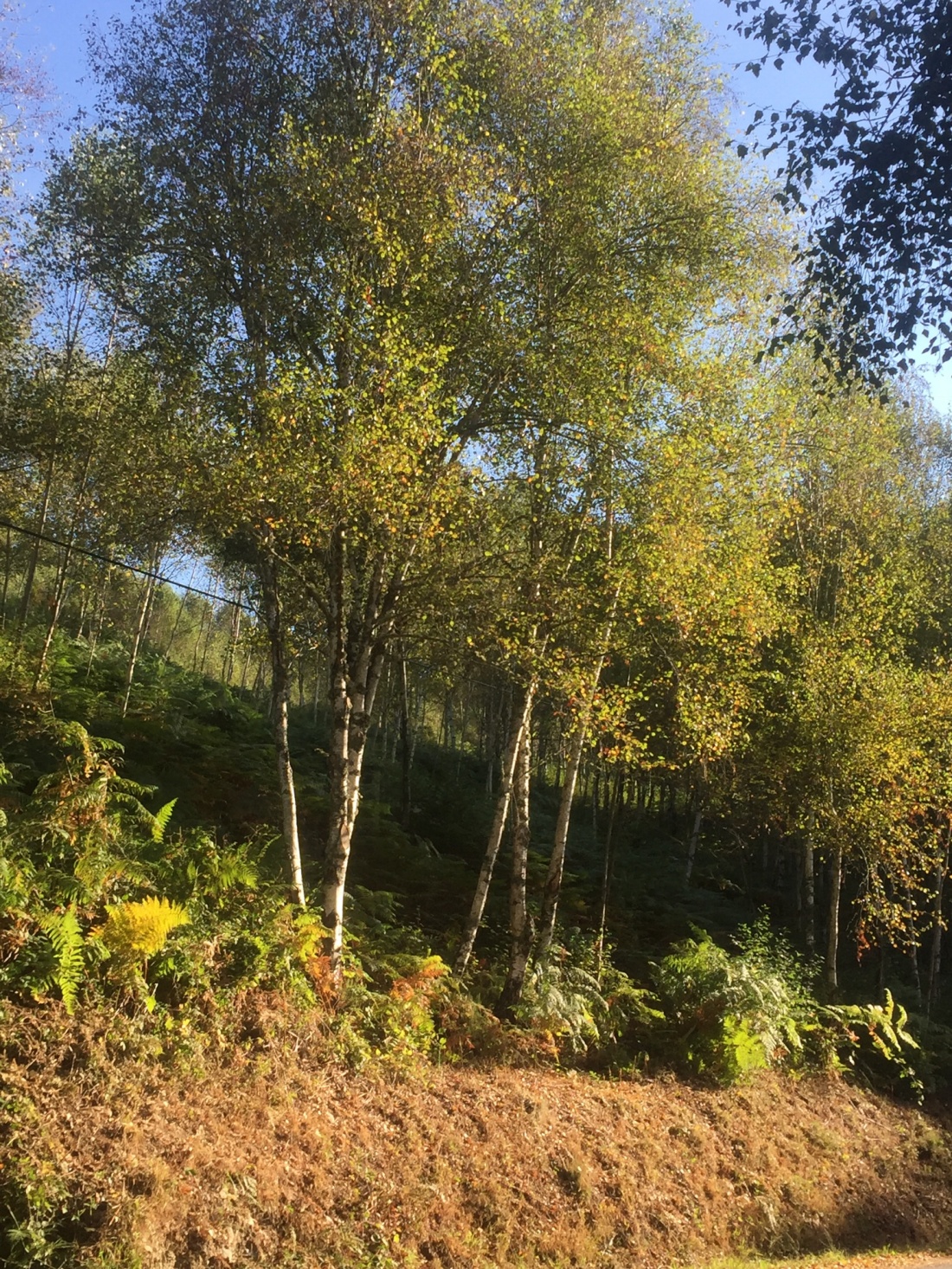

September 30, 2018
Usually we eat a breakfast of banana and yogurt that we buy the night before in a supermercado. If an albergue has breakfast, it’s toast, coffee and orange juice. This morning at Pension Fernandez, we were greeted with a feast laid out for us when we woke up. We had toast, lots of different pastries, cheese, fruit, orange juice, and coffee. We were well fortified for a hike over the Galician Mountains. There was quite a bit of elevation gain, but it felt good after days of flat walking on pavement. When I hike uphill, nothing hurts for some reason. We hiked in the dark, as usual, for over an hour and as the sky began to lighten, we had an incredible view of pastures and mountains and the sunrise. I was thinking that there was no place else I’d rather be at that moment, just as Enrique turned to me and said, “ Being up here right now is something else.”
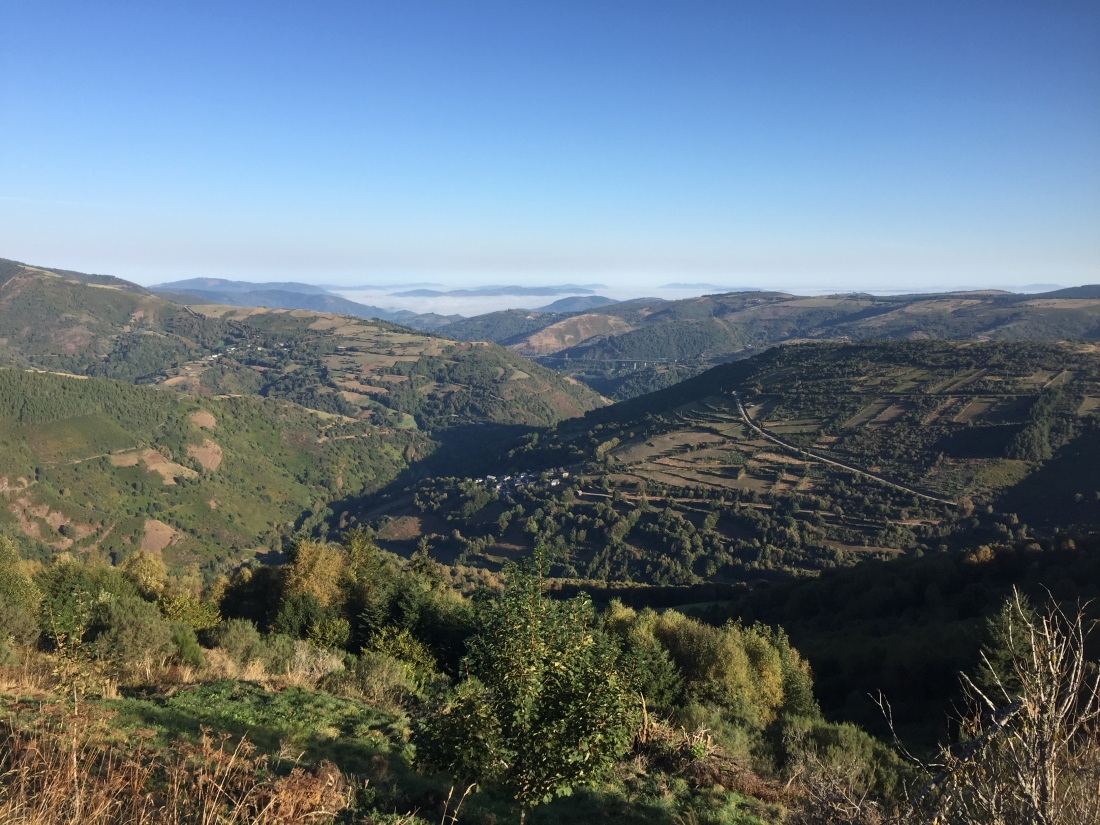
As we hiked, we left the province of Castilla y León and entered the province of Galicia, the province of Santiago! Each region marks the Camino differently, and in Galicia they have stone markers every kilometer with the distance left to Santiago. We have under 160 kilometers remaining which is less than 100 miles.
Partway up the mountain, we ran into Jackie and John, a couple from England we met over a week ago. We’ve been seeing them off and on. It was good to see them walking easily because they’d been having a lot of problems with blisters the last time we saw them.
Up and up and up we climbed. Our destination is a small village called Fonfria, population 41, mostly cows, I think. I was worried that a village this small would have an old run-down albergue, but the place we’re staying, Albergue de Reboleira, is new and beautiful. There is a large room with bunk beds, but then the manager led us to a smaller room with bunk beds, but the bottom bunk is a king-size bed! That didn’t make my list of albergue amenities because I never imagined that was possible. And we finished the evening with a Galician pilgrim dinner.
Monument to the pilgrims:

